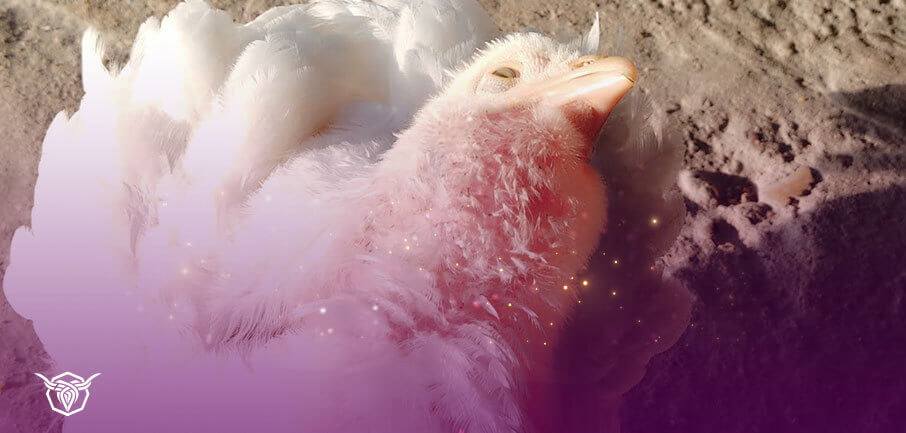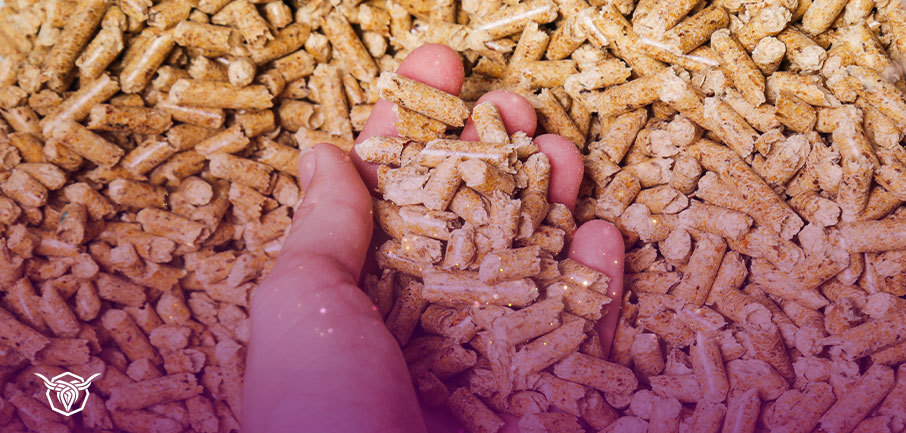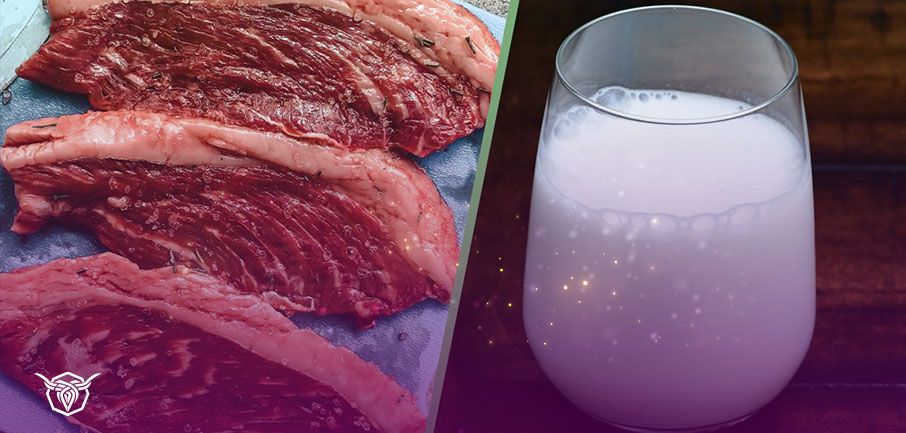Ascites

اعداد د. عماد أديب
تخرج من كلية الطب البيطري - جامعة الزقازيق عام 2001
حصل على دبلومة دواجن و دبلومة فارماكولوجيا و عدد من الدورات فى الدعاية و التسويق و...
Ascites
Definition
Ascites is not a disease; it is a condition in which excess amounts of ascitic fluids (a combination of lymph and blood plasma which has leaked from the liver) accumulate in the body cavity so called "water belly" due to a spectrum of physiological and metabolic changes as dietary, environmental, genetic factors and high growth performance.
Etiology
Physiological
• Low oxygen status of embryos during incubation may be related to the onset of ascites.
Metabolic
• Nutritional (diet density, feeding type)
• Today´s broilers grow much faster, eating less feed. The growth of the heart and lungs has not increased in size proportional to the increase in body weight and breast meat yield. The rapid growth of the bird means more oxygen demand, requiring more work out of the heart and lungs.
• Excess levels of Sodium in the water or salt in feed leads to increased blood pressure in the lungs. Many feed millers still use fish meal high levels of Sodium. Levels of Sodium over than 400 ppm could cause problems in broilers.
Environmental
• Ascites outbreaks have been attributed in several reports to poor air quality as dusty conditions or poor ventilation as elevated ammonia, carbon monoxide, or carbon dioxide levels.
• Respirable dust (dust particles between 10 µ and 0.5 µ, not trapped in the upper respiratory tract, able to penetrate to the terminal air sacs of the lungs blocking the alveoli) stays for longer period which leads difficulty for birds to breath hence deficiency of oxygen in the blood.
• Presence of high carbon dioxide level in the shed either due to overcrowding, poor ventilation, blocking fresh & cold air during winter with curtains or due to lack of proper exhaust fans results deficiency of oxygen in the blood of bird.
• Temperature
Genetic
• Usually genetics have been blamed for the ascites. However, the breeding companies have improved genetic resistance of the stock to the ascites.
Microbial
• Most of the Gram-negative bacteria (E. coli, Salmonella spp., Campylobacter) are considered pathogenic because of their lipopolysaccharide (LPS) layer and its endotoxin. LPS triggers pulmonary vasoconstriction leading to ascites in broilers.
• Aspergillus fumigates, occasionally present in the environment of all poultry. Disease caused by this mold, so called "brooder pneumonia", forms mold colonies in the lungs, and produces hard nodular areas leading to air sac infection and subsequently to the development of ascites.
Signs & Post-mortem lesions of ascites:
• Morbidity is usually 1-5%, mortality 1-2% but can be up-to 30% at high altitude.
• High rate of gasp is often observed in ascitic birds even the absence of apparent heat stress.
• Gurgling sound often accompany as they often just sit with gasping.
• Birds which are ascitic may show sign of Cyanosis especially around comb & wattles.
• Most death begins at about 3 weeks of age.
• In broiler chickens, the condition often leads to death.
• Ascitic birds tire out easy and often die on their bellies.
• Opening the abdominal cavity of an ascitic bird, a cup or more of amber, clear fluid or jellied material that resembles blood plasma will pour out.
• Lungs of ascitic bird may often appear pale or greyish. Lungs are extremely congested & edematous.
• Liver may be edematous (swollen and congested) and may have fibrin (blood clotting protein which is soluble in the blood) adhering to the surface.
• The heart of ascitic birds is enlarged and there is fluid in the pericardium (the sac surrounding the heart) and thickening of right side myocardium & dilation of the ventricle are very common.
• Microscopic finding - increased cartilage nodules in lung.
• Blood plasma builds up in the low-pressure liver venous system because it is unable to return to the heart in sufficient volume.
PATHOGENESIS
• The ascites syndrome is associated with abnormally high blood pressure between the heart and lungs (pulmonary hypertension) and the heart is unable to push sufficient blood through the lungs leading to right heart failure, increased blood pressure in the veins. As the right ventricle dilates, the valves become increasingly inefficient and allow some blood to flow back into the atrium. This leads to right ventricular failure.
• Broiler chickens, by the nature of their ability to consume large quantities of feed and grow very rapidly, have an extremely high demand for oxygen. Generally, the bird’s cardiovascular system can accommodate this demand, with the heart efficiently pushing blood through the lungs, where oxygen exchange occurs.
• In a try to increase the blood's oxygen carrying capacity, red blood cell production is increased. This causes a thickening of the blood, and further resistance to blood flow, compounding the lung congestion problem.
• Because the lung volume and cardiovascular volume within the lung tissue is fixed, there comes a point at which the lung can no longer accommodate any more blood being supplied by the heart and insufflations Cardiopulmonary capacity (the maximum amount of blood the heart can pump to the lungs for oxygenation). This is the starting point for heart failure.
• When the point of heart failure is reached, it is probably easier to imagine the outcome by using water through a hose as an analogy. If water is being pumped through a 2-inch hose into a 1-inch hose, as long as the water pressure is kept low, everything will flow efficiently.
• If the water volume through the 2-inch hose is increased so that the 1-inch hose can no longer accommodate it, the water pressure will rise. If the connections are very strong, you can see the larger hose expand and stretch to try to adjust to the increased pressure and ultimately, the smaller hose will stretch in diameter as well. If the connections are not tight, water will leak out and, the higher the pressure, the more leakage will occur. A similar, though more complex, situation will also occur in the chicken’s circulatory system.
• The blood pressure will back up from the lungs, through the heart, back to the liver and abdominal viscera. These increase in back flow causes liver congestion (passive liver congestion) because the capillaries cannot exchange the fluid and the high pressure causes the plasma to leak from the liver and capillary beds into the body cavity.
• The heart will enlarge due to both pressure and, with time, hypertrophy of the muscles due to the hard pumping activity.
• Further upstream, the blood vessels will also enlarge, causing the liver to swell and blood vessels on the intestines to become prominent. Because blood vessels are also quite leaky, fluid will leak out and that is the source of all the extra "water" seen in the abdomen of affected birds.
Management Practices to Prevent Ascites
Feed restriction
- Reduce the feed intake of broilers decreases the growth performance.
- Feed restriction is only of economic benefit when the incidence of ascites is very severe.
- Slower growing birds have reduced oxygen needs.
- Feed restriction slows body growth, allowing the cardiopulmonary organs (heart and lungs) to keep up with the oxygen demands of the birds.
- Feed restriction during the finishing period is less important because the weight gain relative to frame size is less.
- Birds which are feed restricted early may be able to enter the grower and finisher periods with stronger cardiopulmonary systems.
- With moderate feed restriction, the birds may be able to achieve similar weights to non-restricted birds.
- Dietary compositions that improve feed conversion ratio also increase the incidence of ascites. These factors include high energy density, a high protein: energy ratio.
- Checking Sodium level of water, if Sodium level is high then considers using an alternate source of water that is better quality for the first 3 - 4 weeks.
- Vitamin E and Selenium deficiency.
- Arginine is an essential amino acid for poultry and serves as the precursor for the potent pulmonary vasodilator and response to large increases in blood flow and reduces the incidence of ascites in broilers exposed to cool temperatures.
- Lighting programs have been used to reduce the incidence of leg problems, sudden death syndrome (SDS) and ascites.
Environmental factors:-
1. Temperature:
- Careful attention to brooding temperatures is critical in the prevention of ascites.
- Low temperature brooding forces the birds to use energy (which requires oxygen) in order to maintain body temperature. This predisposes a flock of broilers to ascites, although the signs of ascites show up later in production.
- In the colder months, it is better to add heat and keep the air moving than to shut down vents or reduce airflow in an effort to conserve heat.
2. Air Quality:
- Any further challenges to the bird's ability to exchange oxygen with its environment predispose it to ascites.
3. Dust:
- Dusty environments can contribute to the onset of ascites.
- Dust can be controlled by spraying canola oil on the litter at 0.8 liters / m2 over the six week growing period.
- Disease causing microorganisms can also attach themselves to dust particles, and be respired, causing irritation or infection in the lungs.
4. Ammonia:
- High levels of ammonia in the broiler house can irritate the lungs, resulting in decreased oxygen transfer between the bird and the environment.
- Atmospheric ammonia was significantly reduced with treated litter with the PLT treatment and, consequently, mortality due to ascites was reduced from 2.1% to 0.3%.
5. Oxygen:
- Natural gas open-flame brooders contribute to oxygen depletion in broiler houses. This burning of oxygen is in direct competition with the birds.
- Ventilation rates must supply enough air to replenish the oxygen consumed.
- The volume of air coming in the air intakes should be uniformly distributed to the birds.
- In cold weather, air must be preheated before it comes into contact with the birds.
- Adequate air exchange must be provided to broilers as a preventative method for ascites.
- Because broilers have rapid growth rates, adequate oxygen levels are essential to prevent increased stress on the respiratory system and consequently the heart.
6. Stress:
- While we don’t know all the stressors that can affect chickens, we can address those that are obvious.
- Keep densities optimum.
- Walk the barns often and carefully; continued exposure of the birds to humans will allow them to become accustomed to your presence.
- Rushing through the barn and making sudden gestures will spook the birds and add to their stress level.
- Environmental temperature, humidity, and air movement should be controlled.
Treatment:-
- Vitamin C (500 ppm).
- Prevent respiratory disease conditions.
- Ascites caused by other factors (eg, Sodium, lung damage, liver damage, etc) can be prevented by avoiding the etiologic agents.
- Select breeds which are not genetically susceptible to this condition.
- Acidifier.
- Liver support.
- Anti-mycotoxin.
- Use bronchodilator to increase oxygen flu.
- Decrease feed energy.






